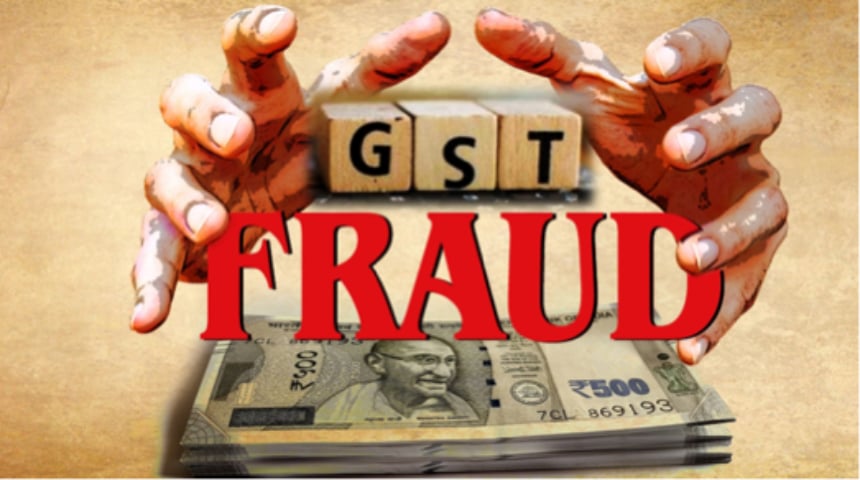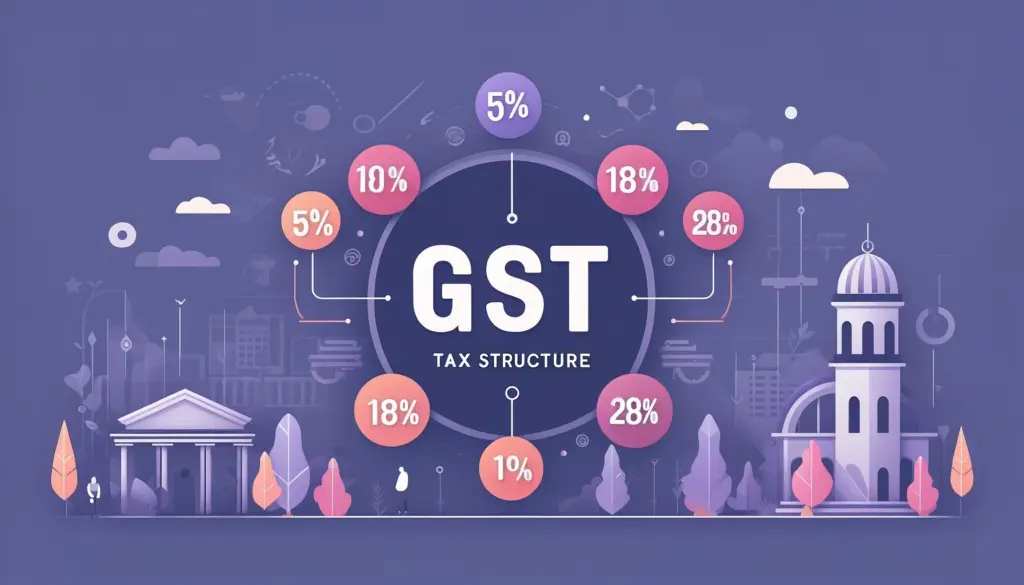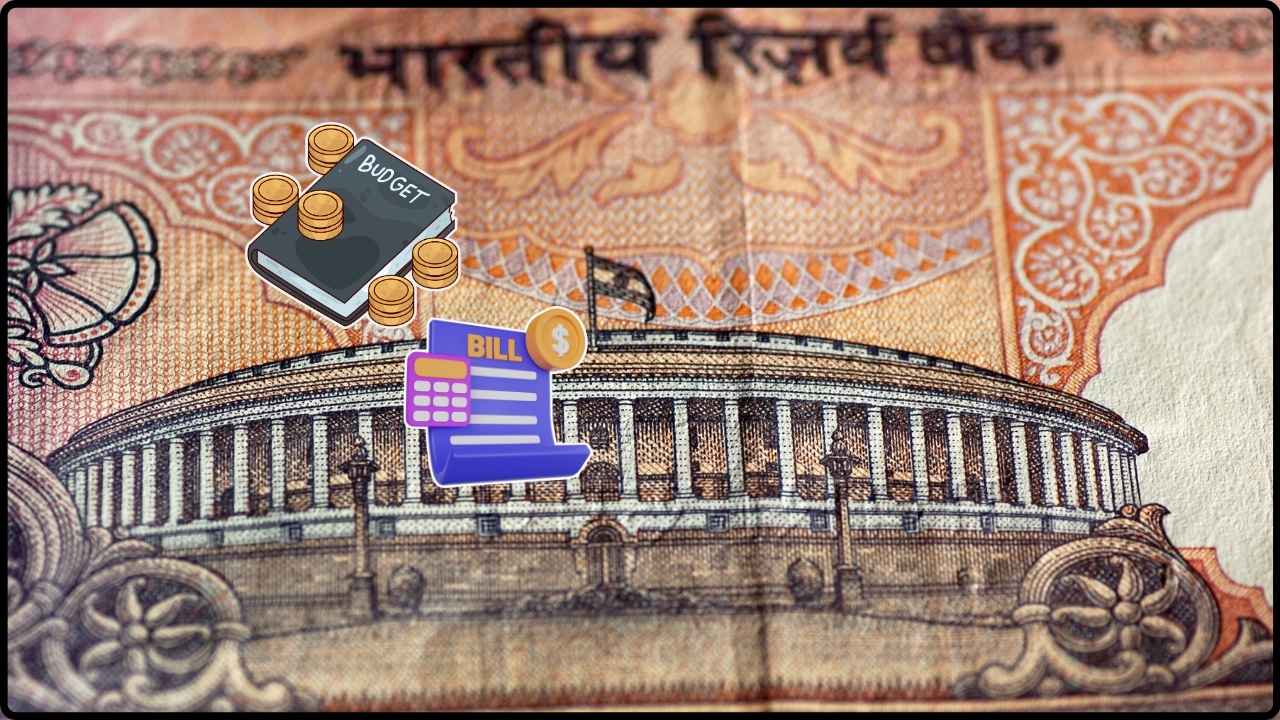GST Crackdown in Aligarh: In a major crackdown on fraudulent activities related to Goods and Services Tax (GST), the Aligarh GST Department has issued notices to 11 companies accused of being part of a massive tax evasion scam. This move is part of a broader investigation into fake firms and fictitious tax credit claims that have been defrauding the government of millions of rupees. The scam involves the creation of fake companies, which then generate bogus invoices for products or services that were never actually supplied. This allows these fake firms to claim Input Tax Credit (ITC) on GST, a benefit that allows businesses to offset the tax they pay on inputs against the tax they collect on their outputs. In this case, the tax fraud is estimated to involve around ₹50 crore (approximately 6.5 million USD). Let’s break down the details of this significant crackdown and explain why it matters for both everyday citizens and professionals.
GST Crackdown in Aligarh
The GST crackdown in Aligarh serves as a powerful reminder of the ongoing efforts to tackle fraud in India’s tax system. The use of fake firms and bogus invoices for claiming fraudulent Input Tax Credit is a significant problem, costing the government millions of rupees. For businesses, it is crucial to be vigilant, audit their records, and ensure they deal only with legitimate entities to avoid getting caught in these scams. The GST system is meant to make tax collection transparent and efficient. By taking steps to stay informed and follow the law, businesses can help ensure that the system remains fair and that they don’t inadvertently become part of fraudulent activity.

| Key Information | Details |
|---|---|
| Total Firms Issued Notices | 11 fake firms involved |
| Estimated Tax Evasion | ₹50 crore (~6.5 million USD) |
| Nature of Fraud | Fake invoices, fictitious addresses, stolen PAN and Aadhaar details, shell companies for ITC claims. |
| Location of Fraud | Aligarh, Uttar Pradesh |
| Investigation Body | Directorate General of GST Intelligence (DGGI) |
| Fraudulent Invoices Exposed | ₹27.10 crore (~3.5 million USD) worth of fake invoices |
| Legal Framework | Under investigation per the Central Goods and Services Tax (CGST) Act |
Context: Why Is This GST Crackdown So Important?
GST crackdown fraud is a serious issue that affects both the government and genuine businesses. The GST system is designed to ensure that tax is paid on goods and services throughout the supply chain. When fake companies abuse the system, they create artificial tax credit claims, which undermines the integrity of the tax system.
In Aligarh, a district in Uttar Pradesh, the authorities uncovered a sophisticated web of fraudulent activity. These fake firms were set up in vacant offices and used stolen Aadhaar and PAN details to create their so-called “business operations.” They issued fake invoices, making it seem like they had provided goods or services to legitimate companies. In reality, no goods or services were ever exchanged.
What Does This Mean for Businesses and Taxpayers?
For businesses that are honestly complying with GST laws, these fraudulent activities result in an unfair advantage for the crooks who are evading tax. Not only does this lead to a loss of revenue for the government, but it also puts pressure on legitimate businesses who are playing by the rules. It can result in stricter GST audits, delayed refunds, and even legal consequences for businesses that are inadvertently caught up in fraudulent claims.
For taxpayers, this fraud leads to higher tax rates as the government seeks to compensate for lost revenue. The authorities are working hard to ensure that these fraudulent networks are dismantled to maintain a fair and just taxation system.

Step-by-Step Breakdown of How the GST Crackdown in Aligarh Work
1. Creating Fake Firms
The first step in the scam is the creation of shell companies. These are businesses that exist only on paper and have no physical presence. They usually operate from empty office spaces, which are rented solely for the purpose of generating fake invoices. These businesses do not actually engage in manufacturing or trading activities.
2. Generating Fake Invoices
The next step involves the generation of bogus invoices. These invoices are made to look legitimate and typically include information about goods or services that were supposedly provided. However, no real exchange takes place. These invoices are then used to claim Input Tax Credit on the GST paid for the products that were never delivered.
3. Claiming Input Tax Credit (ITC)
The ITC system is designed to help businesses offset the GST they pay on their purchases against the tax they collect on their sales. Fraudsters exploit this by filing fake ITC claims based on the bogus invoices they’ve generated. This helps them get tax refunds from the government or reduce their own tax liability, which they wouldn’t otherwise be entitled to.
4. No Actual Goods or Services
In these cases, the goods or services that are listed in the invoices don’t exist. The entire scheme revolves around fake transactions, and no actual trade or delivery of products happens. The fake firms essentially serve as a conduit for cashing in on government benefits.
5. Evading the System
By generating fake invoices and claiming ITC, the fraudsters evade paying actual taxes, which leads to tax loss for the government. This scam not only defrauds the tax system but also puts a burden on the economy by creating an unfair market.

Practical Advice for Businesses to Avoid Getting Caught Up
Here are a few things businesses should do to ensure they don’t unknowingly become involved in fraudulent activities like the ones uncovered in Aligarh:
- Verify Your Suppliers: Always ensure that the businesses you deal with are legitimate. Check their GST registration and their history of tax compliance. You can use the GST portal to confirm their registration details.
- Monitor Your ITC Claims: Keep a close eye on the Input Tax Credit you’re claiming. Ensure that all your invoices are from genuine sources and that you’re not being tricked into accepting fake invoices. Review your past ITC claims periodically to ensure consistency.
- Audit Your Records: Regularly audit your business’s financial and tax records. This can help catch any discrepancies that might arise from fraudulent invoices. If you find any discrepancies, investigate and report them before they snowball.
- Report Suspicious Activity: If you come across any suspicious firms or invoices, don’t hesitate to report them to the GST department. The sooner these fraudsters are caught, the less harm they can cause.
- Stay Informed: The world of GST regulations is constantly changing. Stay updated on the latest news and regulations from reliable sources like the GST Council and your local tax authority. Make use of online resources, webinars, and workshops for learning about new trends in the GST system.
How the Government is Addressing GST Fraud?
The government has been ramping up efforts to tackle GST fraud. Recently, GST intelligence wings and tax authorities like the Directorate General of GST Intelligence (DGGI) have significantly increased their scrutiny on businesses, especially those involved in fake invoicing and ITC claims.
In this particular case in Aligarh, the authorities uncovered the scam after analyzing a complex network of fake firms. They utilized advanced data analytics, AI-based tools, and cross-referencing techniques to track down suspicious activities. These modern techniques are increasingly becoming critical in identifying fraudulent networks that would otherwise be difficult to spot through traditional methods.
West Bengal’s GST Revenue Soars 12% in July
Businessman Arrested in ₹34 Crore GST Scam — Shocking Details Emerge
How to Add or Update Bank Details on the GST Portal Without Errors










